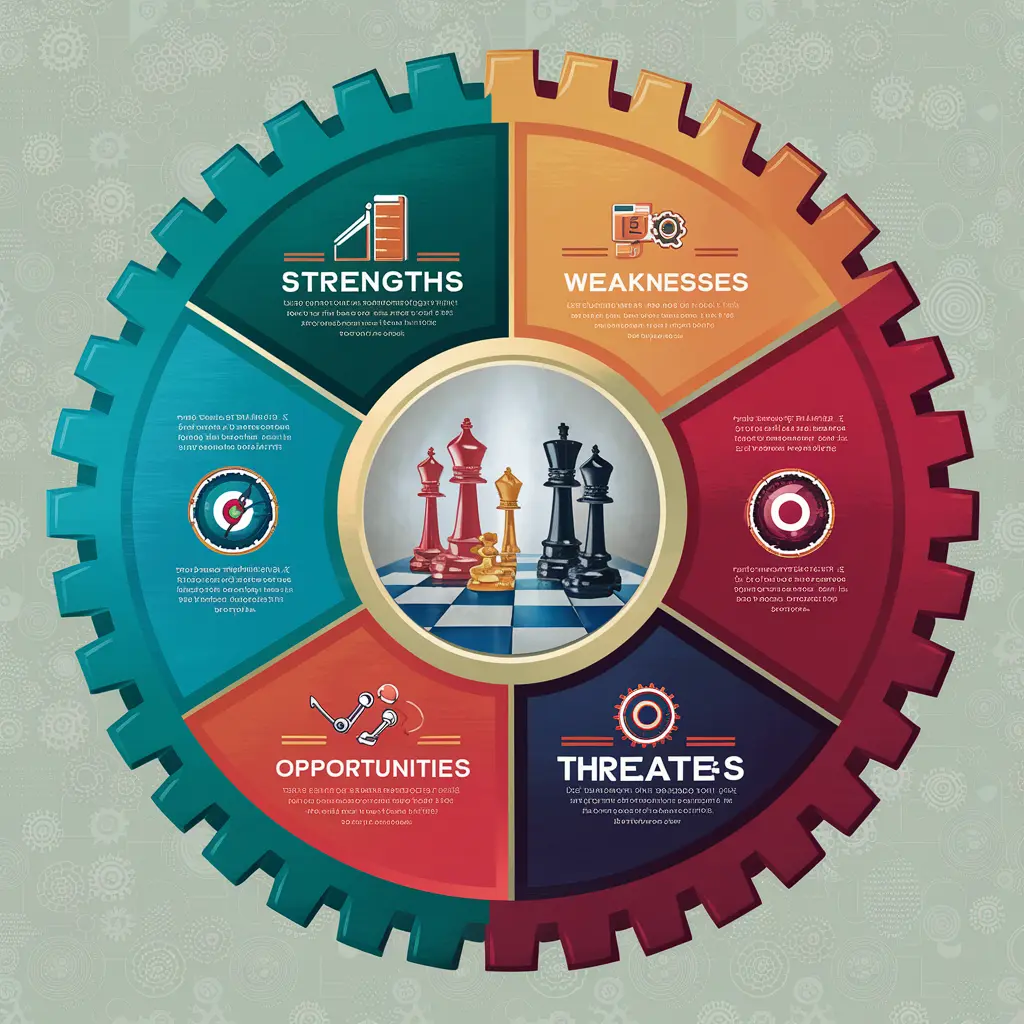Mastering SWOT Analysis: Key to Business Growth and Success
Understanding and addressing internal weaknesses is crucial for any business. It not only prevents potential impacts but also strengthens your strategic planning with SWOT analysis. This tool is pivotal for businesses to evaluate their internal and external environments comprehensively.
SWOT Analysis in Strategic Planning
Strategic planning with SWOT involves analyzing four key elements—Strengths, Weaknesses, Opportunities, and Threats. This approach helps entrepreneurs and business advisors grasp the full spectrum of their business environment, leading to well-informed decisions that drive success.
STRENGTHS
Strengths are what your business does well, setting you apart from the competition. This could be anything from a strong brand reputation in Miami to proprietary technology, exceptional staff, or a loyal customer base. Recognizing these strengths is the first step in leveraging your business’s core competencies to enhance market position and implement effective business scaling strategies.
WEAKNESSES
Every business has areas that could improve. Weaknesses might include limited resources, insufficient marketing strategies, or outdated technology. Identifying these areas allows you to take proactive measures to enhance your business process consulting strategies and improve overall performance.
OPPORTUNITIES
The external environment holds various opportunities that your business can capitalize on. These might be emerging market trends, economic shifts, or new technological advancements. With strategic planning using SWOT, businesses can identify these opportunities and develop plans to take advantage of them, often leading to a competitive edge.
THREATS
External threats are factors outside your control that could pose risks to your business. These include new competitors, regulatory changes, or shifts in consumer preferences. Effective strategic planning with SWOT includes identifying these threats and developing contingency plans to mitigate their impact.
Mastering SWOT Analysis: A Step-by-Step Guide
IDENTIFYING STRENGTHS
Start by reflecting on what sets your business apart. Consider your strongest assets like skilled staff or strategic partnerships. Engage with your team and stakeholders to identify these key strengths, which are the foundation for building robust business strategies.
EVALUATING WEAKNESSES
Look internally to pinpoint areas needing improvement. Engage in honest feedback sessions with your team, customers, and suppliers to gather a diverse perspective on internal weaknesses. This step is crucial for refining your strategies and enhancing your offerings
ASSESSING OPPORTUNITIES
Stay informed about the latest trends and market dynamics to spot external opportunities. Whether it’s a shift towards eco-friendly practices or a surge in demand for bookkeeping services in Miami, recognizing these opportunities can lead to significant growth.
ANALYZING THREATS
Keep an eye on potential challenges that might arise from external factors. Regularly assess the competitive landscape and regulatory changes to stay ahead of potential threats.
APPLYING THE SWOT ANALYSIS
Use real-life scenarios to apply the insights gained from SWOT. For example, leverage a strong customer service team to enhance client retention or explore e-commerce to expand your market reach. Practical application of SWOT makes your strategic planning effective and dynamic.

Enhancing Strategy: Merging SWOT with Key Analytical Frameworks
INTEGRATING SWOT WITH PESTEL ANALYSIS
Combine SWOT with PESTEL to align internal strengths and weaknesses with external opportunities and threats. This comprehensive approach aids in proactive adaptation to economic or technological changes.
COMBINING SWOT WITH PORTER’S FIVE FORCES
Integrate Porter’s Five Forces with your SWOT analysis to understand and strategize against competitive forces in your industry. For instance, use your strong brand reputation to mitigate the threat of new entrants
SYNERGIZING SWOT WITH THE BCG MATRIX
Use the BCG matrix alongside SWOT to strategically allocate resources and plan for product portfolio management. This combination helps ensure that your business strengths support high-performing products while addressing any weaknesses.
Takeaways and Action Items
Conducting a SWOT analysis provides entrepreneurs with a strategic view of their business, highlighting how to use internal strengths to exploit external opportunities and mitigate internal weaknesses against external threats. This approach enhances decision-making, promoting growth and resilience by adapting strategies to evolving markets and capabilities, thus driving sustained success and competitiveness.
Integrating SWOT analysis with frameworks like PESTEL, Porter’s Five Forces, and the BCG Matrix enhances its effectiveness, providing a deeper understanding of the business environment. This comprehensive approach helps align internal strengths and weaknesses with external opportunities and threats, fostering strategic, nuanced decision-making. By adopting this integrated strategy, businesses can proactively adapt to market changes, ensuring long-term success and a competitive edge.
| ✳️ Assemble a Diverse SWOT Analysis Team ✳️Gather and Analyze Internal Data ✳️Research and Evaluate External Factors ✳️Synthesize Findings and Develop SWOT Matrix | |
| ✳️Conduct a PESTEL Analysis ✳️Review SWOT Findings ✳️Integrate SWOT with PESTEL Insights ✳️Develop Strategic Actions and Prioritize | |
| ✳️Prioritize SWOT Insights ✳️Brainstorm Strategic Initiative ✳️ Evaluate and Select Strategic Initiatives ✳️Develop Implementation Plans for Each Initiative | |
| ✳️Establish Key Performance Indicators (KPIs) ✳️ Implement Data Collection Mechanisms ✳️Conduct Quarterly Reviews ✳️Adjust Strategies Based on Insights | |
| ✳️Schedule the Annual SWOT Review ✳️Collect and Compile Updated Information ✳️ Conduct the SWOT Analysis Review Session ✳️Develop and Communicate Action Plans |
FAQ
Get your FREE 8 Gears Assessment Score in 10 minutes!


